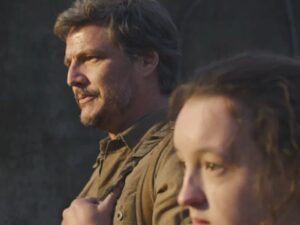The Henri van Breda trial resumed yesterday, and all anyone is talking about is the strand of blonde hair found “in the palm of Marli van Breda’s hand following the axe attacks”.
The hair was found in between Marli’s middle and ring finger, but it’s the similarity to Henri’s hair that was the focal point of happenings at the Western Cape High Court.
Forensic analyst Lieutenant Colonel Henry Stewart told the court that the hair was similar, with this below from News24:
He explained that hair analysis was considered “associative evidence” in court, and was used to exclude or include someone, but not identify them. DNA testing could only be done if the root was attached to the strand.
Defence advocate Pieter Botha wasn’t having any of it, though, and put Stewart to the sword during cross-examination:
[He] said the hair could not possibly be his client’s. He referred to a photo taken of the then 20-year-old on the morning of the murders…
Botha said Van Breda’s hair was at most 30mm in length.
“What are the chances of those hairs coming from the head of my client on that day?” he asked Stewart.
Chances are slim, the officer responded.
“The chances, with respect, are nil,” Botha shot back, and Stewart conceded.
Botha claims that a pillow was placed under Marli’s head in order to help her breathe, and it was here that the hair might have come from:
Botha asked Stewart if hairs could have been transferred to her hand if she had grasped these items. Stuart responded that it could. The hair could also have fallen into her hand, he testified.
Botha referred to a report by one Dr Potgieter, who treated Marli at Stellenbosch Mediclinic. According to his statement, he took forensic samples of nail scrapings and cuttings. These were sealed in a kit and given to the investigating officer.
The hair strand was placed in a bag with a handwritten note. The warrant officer who handled forensics confirmed the nail scrapings and cuttings were received and didn’t make reference to any hairs. He mentioned that both her hands were bloody.
Henri has claimed, in his version of events (HERE), that he awoke to find a black man wearing a balaclava carrying out the attacks. The hair samples might say otherwise:
Fourteen hair samples, including hair from the family, were sent for analysis…
According to Stewart, hair of “African origin” was curly or kinked.
All of the hair collected at the scene was straight, and either red, blonde or black.
Not to be glib, because this is a horrific case, but let’s take a quick look at the tie Henri wore to court yesterday:

The more art-minded out there will recognise that tie as painting “The Starry Night” by Vincent van Gogh.
The painting below:

Now this is all tinfoil hat stuff, but here’s a little bit about the painting from Artble:
Van Gogh created Starry Night in 1889 just thirteen months before his death. At this time he was staying in an asylum at Saint-Remy in France and his behavior was particularly erratic due to his severe attacks. Starry Night is believed to show the view from his bedroom window at the asylum…
The fact that van Gogh was living in an asylum when he created Starry Night has led to questions about his frame of mind and this has left Starry Night wide open to interpretation.
I warned you – just a thought, anyhow.
The trial continues today.





